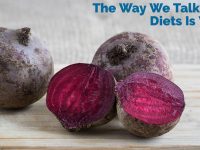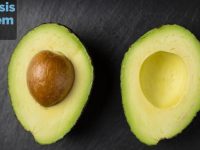Most climbers get more than adequate amounts of most vitamins and minerals because most vitamins and minerals are amply supplied by even less-than-healthy diets. Even when there is a higher prevalence of deficiency for a particular vitamin or mineral, it’s always specific to a single group—such as vitamin B12 deficiency in the elderly, or iron deficiency in women of childbearing age—so the average person still doesn’t need to worry about them.
Despite the statistics, however, many people still worry about nutrient intake. Statistics, it seems, are not always the best way to convince someone of the adequacy of their diet—but where statistics fail, explanation can prevail.
This is definitely the case with calcium, which has been commandeered by the dairy industry. I have nothing against dairy, but I do have qualms about an industry attempting to convince the public at large that they have sole provenance over the bequethal of calcium. This could not be further from the truth—because while dairy is a great source of calcium, there are equally good sources that you probably already include in your diet.
Stacked Against Greens: How the RDA Misrepresents Calcium
The RDA for calcium for adults is 1,000 milligrams, an amount determined to be adequate to prevent long-term diseases like osteoporosis. This is abnormally high compared to the RDAs for other nutrients (though some nutrients have larger AIs, like sodium and potassium), and in light of this alone it may already appear challenging to obtain calcium in adequate amounts.
This is where dairy enters the picture. Dairy is extremely high in calcium, which makes it an obvious choice for getting calcium. If you follow the link in the previous paragraph, you can see that dairy holds 8 of the top 10 spots for dietary sources of calcium. And it doesn’t just hold those spots by an inch, but by an apparent mile, with over three times the calcium as most of the remaining non-dairy, non-fortified foods. When measured conventionally, dairy reigns supreme.
There’s a problem with only measuring the total amount of calcium in a food, however: different sources of calcium are absorbed better or worse. Dairy, for all its supremity, has only middle-range absorption (32%), while many apparently poor sources have excellent absorption (some upwards of 65%). When you consider not only the total calcium in a food, but also our ability to absorb the calcium from that food—because we really only care about the calcium we absorb—the playing field levels.
Of course, when we consider absorption we must first recalibrate the RDA to also consider absorption. Since dairy is held as the ideal source of calcium, it’s reasonable to use the 32% absorption rate from dairy to arrive at a new RDA. 32% of 1,000 milligrams is 320 milligrams, so the total amount of calcium we should absorb every day (regardless of the total amount of calcium we consume) should be at least that high.
If you drank enough milk to get 1,000 milligrams of total calcium, you would be fine—but there are other ways to get to 320 milligrams of absorbed calcium. For example, many dark leafy greens are excellent sources. Collard greens, despite being slightly high in oxalic acid (a calcium absorption inhibitor), has loads of well-absorbed calcium. A single cup of collard greens would yield 139 milligrams of absorbed calcium, or 44% of the total we need everyday. That’s better than milk, which would yield 113 milligrams of absorbed calcium or 35% of the total.
It’s not just collard greens, either, though collard greens are probably the best greens for calcium absorption. A cup of cooked kale or bok choy are each worth 27% of the RDA. Cabbage is worth 15%; broccoli, 12%. Pretty much the only greens that are not a decent source of calcium are the greens in the amaranth family, like spinach. Those greens are so high in oxalic acid that very little calcium is left available to absorb—12% of the RDA for lambsquarters, and 5% for spinach.
So you can easily get calcium from other sources in your diet, which makes sense considering that most of the world doesn’t consume dairy with frequency (or at all). If dairy were really the only decent source of calcium, we would expect to see the countries with the highest dairy intakes to have the least incidence of osteoporosis and vice-versa, which we don’t. It’s a bit more complicated than just calcium intake (many of the highest countries are at high latitudes, suggesting a large role for vitamin D), but it’s nevertheless clear that dairy isn’t the only or even the best source of calcium.
Where Can You Get Calcium From?
Dairy and greens are the best sources, but other foods provide decent amounts of calcium as well. Sesame and chia seeds, for example. Or sardines (when you eat the bones). Furthermore, if you don’t drink dairy, you may still drink an alternative milk like almond milk or coconut milk, all of which are now routinely fortified with calcium. From all the sources in your diet, it’s likely you’ll get enough calcium—but if you’re still concerned, you can check this table I drew up awhile back:
| Food | Serving Size | mg (Total) | % Absorbed | mg Absorbed Calcium | % of Needs (Male) | % of Needs (Female) | |
|---|---|---|---|---|---|---|---|
| ** | Yogurt | 1 cup | 488 | 32% | 156 | 49% | 49% |
| ** | Sheep’s Milk | 1 cup | 473 | 32% | 151 | 47% | 47% |
| † | Collard Greens (Cooked)* | 1 cup | 268 | 52% | 139 | 44% | 44% |
| † | Tofu | 4 oz | 392 | 31% | 122 | 38% | 38% |
| ** | Milk | 1 cup | 352 | 32% | 113 | 35% | 35% |
| ** | Parmesan | 1 oz | 336 | 32% | 108 | 34% | 34% |
| † | Turnip Greens (Cooked) | 1 cup | 197 | 52% | 102 | 32% | 32% |
| ** | Sardines (w/ Bones) | 1 can | 351 | 27% | 95 | 30% | 30% |
| ** | American Cheese | 1 oz | 296 | 32% | 95 | 30% | 30% |
| ** | Gruyere | 1 oz | 287 | 32% | 92 | 29% | 29% |
| † | Kale (Cooked) | 1 cup | 179 | 49% | 88 | 27% | 27% |
| ** | Swiss | 1 oz | 269 | 32% | 86 | 27% | 27% |
| † | Bok Choy (Cooked) | 1 cup | 158 | 54% | 85 | 27% | 27% |
| † | Fortified Non-Dairy Milk | 1 cup | 300 | 24% | 72 | 23% | 23% |
| † | Fortified Orange Juice | 1 cup | 350 | 20% | 70 | 22% | 22% |
| ** | Provolone | 1 oz | 212 | 32% | 68 | 21% | 21% |
| ** | Mozzarella | 1 oz | 205 | 32% | 66 | 21% | 21% |
| ** | Cheddar | 1 oz | 204 | 32% | 65 | 20% | 20% |
| † | Sesame Seeds | 1 oz | 280 | 21% | 59 | 18% | 18% |
| † | Green Cabbage (Cooked) | 1 cup | 72 | 65% | 47 | 15% | 15% |
| ** | Feta | 1 oz | 140 | 32% | 45 | 14% | 14% |
| † | Red Cabbage (Cooked) | 1 cup | 64 | 65% | 42 | 13% | 13% |
| † | Broccoli (Cooked) | 1 cup | 62 | 61% | 38 | 12% | 12% |
| † | Chia Seeds* | 1 oz | 179 | 21% | 38 | 12% | 12% |
| † | Lambsquarters (Cooked)* | 1 cup | 464 | 8% | 37 | 12% | 12% |
| † | Teff* | 1 cup | 123 | 20% | 25 | 8% | 8% |
| † | Amaranth* | 1 cup | 116 | 20% | 23 | 7% | 7% |
| † | Spinach (Cooked) | 1 cup | 245 | 5% | 12 | 4% | 4% |
| * = Actual absorption rate unknown; based off similar food items | ** = Pesco/Lacto/Ovo-Vegetarian | † = Vegan |
| % of Needs determined off of an RDA of 1,000 mg and average absorption of 32% for milk for a hypothetically needed 320 mg absorbed per day |
These aren’t the only sources of calcium, and they’re not even necessarily all of the best sources; as I mentioned earlier, there is a dearth of research into how well we absorb calcium from various sources. They are, however, a good overview of the sources we do have. Chances are similar foods will have similar absorption rates, and that there are some foods simply missing because we haven’t considered them. Since dairy is the perennial favorite for calcium, and since anything apparently worse than dairy in terms in calcium is pooh-poohed, some foods may simply not be on the radar.
Regardless, the list demonstrates well that dairy is not the only good source of calcium, and that if you eat plenty of leafy greens (which I hope you do) you are likely to also be getting plenty of calcium. That alone should hopefully alleviate any worries you have about calcium!
Dairy and Greens Are Both Great
Calcium is only a single side of the picture, of course, because many other things influence calcium absorption—vitamin D status, protein intake, and sodium intake amongst others. But getting that calcium doesn’t have to mean consuming gallons of dairy, though. While you certainly can go that route (and if you enjoy milk products you may do so regardless), you can also go the greens and other means route.
Dark leafy greens are a particularly great source, and since they’re outstanding vegetables for numerous reasons anyway (fiber, general nutrient-density, ease of use), I hope you include a decent amount in your diet. If you do, then you’re likely to meet your calcium quota—so eat your greens!















Against industry-friendly nutricionists, health & lifestyle “gurus” and all sorts of diet propaganda, Climbing Nutrition’s articles are a precious exercise of honesty, competence and clarity. Thank you!